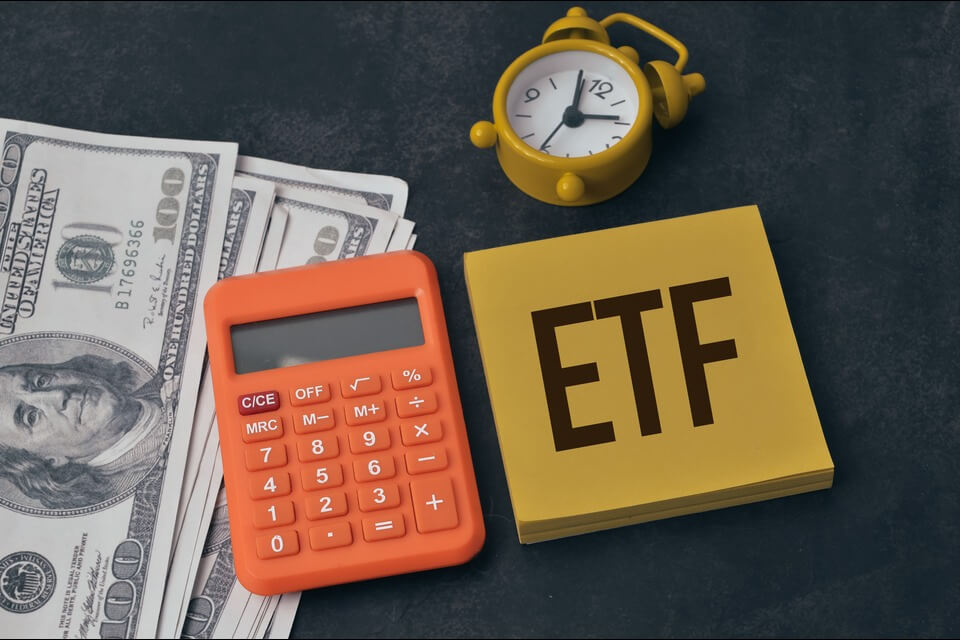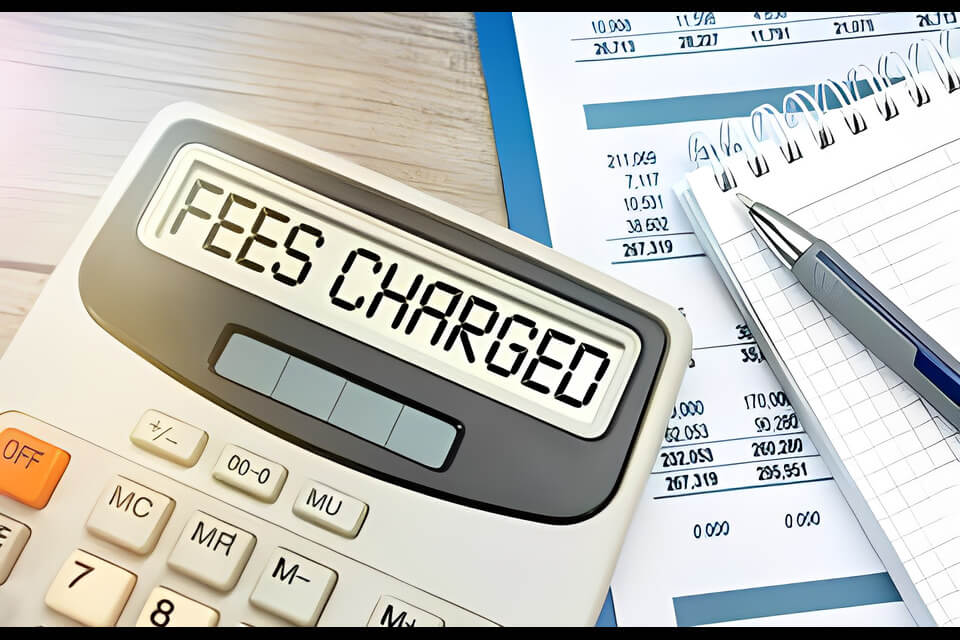Your Step-by-Step Guide to Start Investing Today
Introduction to ETFs
Exchange-traded funds (ETFs) have gained significant attention within the ever-evolving world of stock investing due to their unique advantages and accessibility. This comprehensive guide aims to demystify Investing in ETFs For Beginners, providing a step-by-step approach to confidently navigating the world of ETFs.
Understanding ETF Structure
Before jumping into how ETFs work, it helps to understand what they really are. Think of an ETF, or exchange-traded fund, as a basket of investments. This basket can hold things like stocks, bonds, or even commodities.
Now, here is the cool part: you can buy and sell ETFs on a stock exchange just like regular shares. That means you get the flexibility of stocks with the built-in variety of mutual funds.
In simple terms, ETFs try to match the performance of a group of assets, like an index or sector. It’s a bit like tracking how a whole team is playing, not just one player. Because of this, ETFs offer both convenience and diversification – all in one package.

Types of ETFs
When it comes to ETFs, there’s something for everyone. Each type is built for a different goal or strategy. So, let’s walk through the most common ones and what they offer.
Equity ETFs
They are also called stock ETFs. They let you invest in a specific group of stocks. Some follow an entire stock market index. Others focus on a sector– tech, health, or energy. If you want broad exposure or believe a certain industry will do well, equity ETFs are a solid pick.
Bond ETFs
Bond ETFs hold fixed-income assets like government, corporate, or municipal bonds. They help you earn regular income while spreading out risk through diversification. Plus, they’re easier to trade than individual bonds, which makes them very convenient for everyday investors.
Sector and Industry ETFs
These ETFs specialize in specific sectors or industries, like finance, technology, or energy. If you think a certain industry will shine in the near future, these are worth looking into. They are great for targeting specific trends or economic conditions.
Thematic ETFs
Instead of focusing on sectors, thematic ETFs follow market trends or themes. These themes could be clean energy, artificial intelligence, or cybersecurity. They are ideal for investors who believe in the long-term growth of these themes and want to get-in early.
International ETFs
International or global ETFs give you access to markets outside your home country. Some regions focus on regions like Asia or Europe. Others invest in emerging markets. If you want to diversify beyond your local economy, international ETFs can help.
Commodity ETFs
Commodity ETFs invest in raw materials like gold, silver, oil, or agricultural products. They’re useful if you want to hedge against inflation or changes in currency value. The best part? You don’t need physical ownership or storage.
Benefits of Investing in ETFs For Beginners
Investing in ETFs is a great way to start your journey in the world of investing. Whether you’re just getting started or already have some experience, ETFs offer several advantages that make them worth considering.
Diversification
One of the primary benefits of ETFs is diversification. With just one ETF, you can own a mix of different companies or assets. This diversified portfolio helps spread out your risk. So, if one stock isn’t doing well, it won’t hurt your entire investment too much.
Low Expense Ratios
ETFs usually come with lower fees compared to mutual funds. This means more of your money stays invested and working for you. Over time, even small savings on fees can make a difference.
Intraday Trading
Unlike traditional mutual funds, ETFs offer the flexibility of being traded at any point during the trading day, just like individual stocks. This intraday trading flexibility allows investors to react quickly to market fluctuations and capitalize on short-term price movements.
Liquidity
Because ETFs are listed on major stock exchanges, they are easy to buy and sell. You don’t have to worry much about finding a buyer or seller. Most of the time, trades happen quickly and at fair prices.
Transparency
Want to know exactly what you’re investing in? With ETFs, that’s easy. Most ETFs show their holdings every day. This gives you a clear view of what’s inside your investment.
Tax Efficiency
ETFs are also known for their tax-efficient investment. Thanks to how they’re built, they tend to hand out fewer capital gains. That means you could owe less in taxes compared to other types of funds.
How to Choose the Right ETF
Choosing the right ETFs doesn’t have to be hard. Just follow these simple steps to make smarter decisions with your money.
1. Start with Your Investment Goals
First, be clear about what you want. Are you looking for long-term growth, steady income, or a bit of both? Therefore, your goals will shape which ETFs are right for you.
2. Look Inside the ETF
Next, check what the ETF holds. Does it invest in stocks, bonds, or something else? Make sure its assets match what you’re aiming for.
3. Watch the Fees
ETFs charge a small yearly fee called an expense ratio. Although, lower is better, even a small difference can add up and affect your returns over time.
4. Assess Tracking Error
Tracking error measures how closely an ETF’s performance matches its benchmark index. If they don’t follow closely, that is called a tracking error. A smaller tracking error is a good sign.
5. Consider Liquidity
How often is the ETF traded? Look at the average trading volume of the ETF. The more it is traded, the easier it is to buy or sell without losing money on price changes.
6. Evaluate Performance History
Look at how the ETF has done over time. While it’s not a crystal ball, it gives you a sense of how it handles different market conditions.
7. Understand the Index
If the ETF tracks an index, learn how that index works. Knowing the rules behind it helps you understand what you are really buying.
8. Check Sector and Sector Exposure
Look at which sectors or companies the ETF invest in. Do these match your strategy? Are you well-diversified?
9. Consider Tax Implications
Some ETFs trigger taxes when they buy or sell assets. Others are more tax-friendly. This matters, especially if you invest in a taxable account.
10. Seek Professional Advice
If you’re unsure about selecting ETFs, consider seeking advice from financial professionals. A certified financial advisor can help tailor your ETF choices to your unique financial situation and goals.

ETF Trading and Costs
Trading ETFs works much like trading stocks. You can use market, limit, or stop orders through your broker. But don’t forget – every trade comes with a cost.
There are two main trading costs to watch for. First, brokerage commissions. Second, the bid-ask spread. These might seem small, but over time, they can add up. While ETFs often have lower fees than mutual funds, trading too often can eat into your returns.
To keep more of your gains, sticks with ETFs that have low trading costs.
ETFs and Asset Allocation
ETFs can help you build a smart, well-balanced portfolio. Asset allocation means spreading your investments across different types of assets- like stocks, bonds, or commodities – to reduce risk.
The good news? ETFs make this easy. One ETF can give you access to a whole market or sector. For example, if you want to reduce stock market risk, you could add a bond ETF.
Always think about your goals and how much risk you’re comfortable taking. That will guide how you mix ETFs in your portfolio.
How to Build an ETF Investment Strategy
A good investment plan starts with a clear goal. Are you saving for retirement? A home? Just looking to grow your money? Once you know your goal, figure out your risk tolerance.
Next, look for ETFs that match your plan. Aim to diversify. Choose ETFs from different sectors or asset classes.
And lastly, don’t forget to check your portfolio now and then. Rebalance your portfolio if things drift too far from your plan. This helps keep your risk and returns in line with your goals.
Risks and Considerations
ETFs are flexible and efficient, but they aren’t risk-free.
Market swings can affect EFT prices – especially if they follow stocks or commodities. Leveraged and inverse ETFs are even riskier. They react strongly to market moves and might not suit long-term investors.
Also, some ETFs don’t match their benchmark as closely as they should. This is called tracking error.
To stay safe, research before you invest. And when in doubt, talk to a financial advisor.

Resources and Next Steps
So, you’re starting your ETF journey? Great! Having the right tools can make all the difference. Begin by checking out financial news websites to stay updated on market trends. They offer simple insights and real-time updates.
Next, try ETF screeners like those on Yahoo Finance or your brokerage’s platform. These tools help you filter and compare ETFs based on fees, asset type, and past performance.
Also, make learning a habit. Read guides, watch videos, or join investing forums. The more you know, the more confident you’ll feel.
Finally, don’t hesitate to talk to a financial advisor. They can help you build a strategy that fits your goals.
Frequently Asked Questions (FAQs)
1. Can I invest in ETFs through my regular brokerage account?
Yes, ETFs can be bought and sold through brokerage accounts, making them accessible to individual investors.
2. Are ETFs suitable for long-term investing?
Yes, ETFs can be a part of a long-term investment strategy due to their diversification and low expense ratios.
3. Can I trade ETFs outside of regular trading hours?
ETFs can only be traded during the stock market’s regular trading hours.
4. Do ETFs pay dividends?
Some ETFs pay dividends, especially those holding dividend-paying stocks or bonds.
5. What’s the difference between ETFs and mutual funds?
ETFs trade like stocks throughout the day, while mutual funds are priced at the end of the trading day.
6. Are leveraged ETFs suitable for beginners?
Leveraged ETFs involve higher risk and complexity, making them more suitable for experienced investors.
7. Can ETFs help with retirement planning?
Yes, ETFs can play a role in retirement planning by providing diversification and potential growth.
8. How often should I rebalance my ETF portfolio?
Rebalancing annually or when your portfolio strays significantly from your target allocation is a common approach.
9. Can I invest in international markets using ETFs?
Yes, many ETFs provide exposure to international markets, allowing you to diversify globally.
10. Are there tax implications when selling ETFs?
Selling ETF shares can trigger capital gains taxes, so it’s important to consider tax implications when trading.
Conclusion
In conclusion, you should know that ETFs are a smart and flexible way to grow your money. They let you build a diverse investment portfolio without spending too much. First, learn the basics of how ETFs work. Then, choose the ones that match your goals. Once you’re ready, follow a plan that fits your style. Over time, keep an eye on your investments. If needed, make small changes as the market shifts. The more you learn and adapt, the better your results can be. Staying informed makes a big difference.



